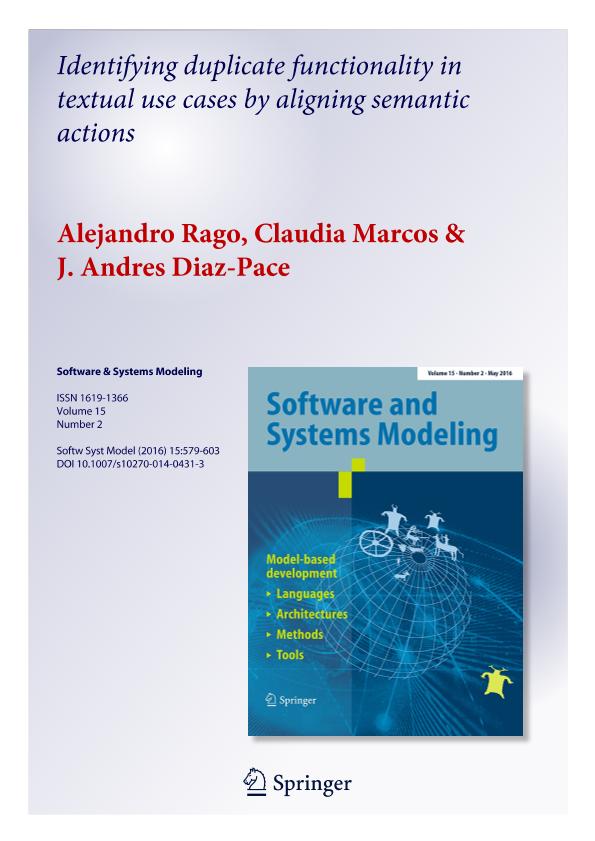Artículo
Identifying duplicate functionality in textual use cases by aligning semantic actions
Fecha de publicación:
05/2016
Editorial:
Springer Heidelberg
Revista:
Software and Systems Modeling
ISSN:
1619-1366
e-ISSN:
1619-1374
Idioma:
Inglés
Tipo de recurso:
Artículo publicado
Clasificación temática:
Resumen
Developing high-quality requirements specifications often demands a thoughtful analysis and an adequate level of expertise from analysts. Although requirements modeling techniques provide mechanisms for abstraction and clarity, fostering the reuse of shared functionality (e.g., via UML relationships for use cases), they are seldom employed in practice. A particular quality problem of textual requirements, such as use cases, is that of having duplicate pieces of functionality scattered across the specifications. Duplicate functionality can sometimes improve readability for end users, but hinders development-related tasks such as effort estimation, feature prioritization, and maintenance, among others. Unfortunately, inspecting textual requirements by hand in order to deal with redundant functionality can be an arduous, time-consuming, and error-prone activity for analysts. In this context, we introduce a novel approach called ReqAligner that aids analysts to spot signs of duplication in use cases in an automated fashion. To do so, ReqAligner combines several text processing techniques, such as a use case-aware classifier and a customized algorithm for sequence alignment. Essentially, the classifier converts the use cases into an abstract representation that consists of sequences of semantic actions, and then these sequences are compared pairwise in order to identify action matches, which become possible duplications. We have applied our technique to five real-world specifications, achieving promising results and identifying many sources of duplication in the use cases.
Archivos asociados
Licencia
Identificadores
Colecciones
Articulos(ISISTAN)
Articulos de INSTITUTO SUPERIOR DE INGENIERIA DEL SOFTWARE
Articulos de INSTITUTO SUPERIOR DE INGENIERIA DEL SOFTWARE
Citación
Rago, Alejandro Miguel; Marcos, Claudia Andrea; Diaz Pace, Jorge Andres; Identifying duplicate functionality in textual use cases by aligning semantic actions; Springer Heidelberg; Software and Systems Modeling; 15; 2; 5-2016; 579-603
Compartir
Altmétricas




